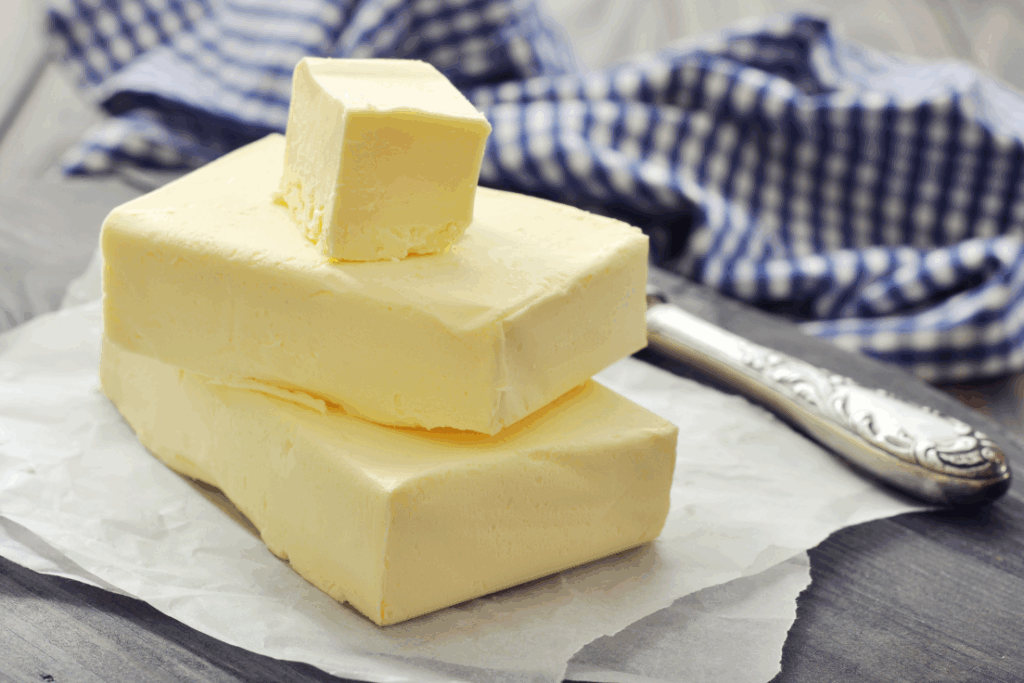Butter is a staple ingredient across food service and manufacturing, but not all butter is created equal. One of the most important distinctions is whether it is salted or unsalted. While both types are made from cream, the presence or absence of salt can significantly impact flavour, shelf life, and functionality.
Understanding the difference between salted and unsalted butter, and when to use each, helps procurement and sales professionals make informed sourcing decisions that support consistency, quality, and cost-efficiency.
What Is Salted Butter?
Salted butter is made by adding salt to fresh cream during the churning process. The salt acts as a preservative, extending the product’s shelf life and enhancing its flavour.
Common uses in food service and manufacturing:
- Table service and spreads: Salted butter is ideal for front-of-house use in cafes, restaurants, and catering.
- Cooking and sautéing: The added salt enhances savoury dishes and helps balance flavours.
- Bakery applications: Some recipes, such as savoury pastries or breads, benefit from the added salt content.
Salted butter is often preferred in settings where flavour consistency and longer shelf life are priorities.
What Is Unsalted Butter?
Unsalted butter is made from pure cream with no added salt. It has a shorter shelf life but offers greater control over flavour and sodium content in recipes.
Common uses in food service and manufacturing:
- Baking: Unsalted butter is the gold standard for baking, especially in cakes, pastries, and desserts where precise flavour control is essential.
- Recipe development: Manufacturers and chefs prefer unsalted butter when they need to manage salt levels across multiple ingredients.
- Dairy recombination and processing: Unsalted butter is often used in the production of other dairy products or as a base for flavoured butters.
Because it is free from added salt, unsalted butter is more versatile and better suited for applications where consistency and customisation are key.
Choosing the Right Butter for Your Operation
The choice between salted and unsalted butter depends on your end use, storage requirements, and flavour profile. Here are a few considerations:
- Shelf life: Salted butter lasts longer, making it ideal for bulk storage and high-turnover environments.
- Flavour control: Unsalted butter gives chefs and manufacturers full control over seasoning.
- Application: Use salted butter for general cooking and table service, and unsalted butter for baking, processing, and product development.
Why Source Butter from Maxum Foods?
At Maxum Foods, we supply both salted and unsalted butter in a mix of bulk formats tailored to the needs of food service and manufacturing professionals. Our butter products are:
- Produced to the highest quality standards
- Available in a range of specifications and formats
- Sourced from trusted dairy regions across Australia and international markets
- Supported by expert advice from our experienced sales team
Whether you are looking to streamline your ingredient sourcing or improve product consistency, Maxum Foods can help you find the right butter solution for your business.
Let’s Find the Right Butter for Your Business
Need help choosing the right butter for your operation?
Whether you need salted butter for flavour and shelf life or unsalted butter for precision and versatility, our team is here to help.
Email sales@maxumfoods.com to speak with our team and explore the best butter solutions for your food service or manufacturing needs.






